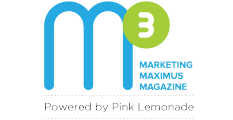Say you have a party to attend this weekend. You buy yourself a dress on Amazon, and immediately the website recommends a range of shoes that would go with it. The next time you login, you are shown a number of dresses similar to the one you bought earlier. How was Amazon so quick to understand and estimate your taste? The answer is predictive analytics.
While certain businesses such as online retailers and streaming services like Netflix have already hopped onto the predictive analytics bandwagon, an increasing number of enterprises are realizing its role in analyzing and predicting consumer behavior.
Your competition is already doing it. Here’s why you should too.
Predictive analytics implies the use of data, statistical algorithms, and machine learning to identify possible future outcomes on the basis of historical data. Let’s see how your business can benefit from this handy tool.
Improve sales forecasting

Research shows that approximately 54% of forecasted deals don’t see the light of day. Predictive analysis solves this problem by identifying correlations via internal and external data sources, to predict which prospect is more likely to close a deal. For example, in an upselling marketing campaign, predictive analytics can identify customers who are most likely to buy your product. This helps you to target them with special discounts and features.
Build effective marketing campaigns

Improved insights into potential sales enables businesses to plan targeted marketing campaigns. Having these insights into purchasing behaviour implies you can tweak your messages and communication channels accordingly. Predictive analytics can tell you how certain kinds of marketing (such as coupons or free trial) have been effective in converting specific types of users in the past. Basis this data, you can then develop offers that appeal to customers that have a high prior conversion rate.
Close more deals, faster

According to InsideSales, 35-50% of sales go to the vendor who responds the earliest. You can use real-time predictive lead scoring to identify which potential customers to call first, thereby increasing your conversion rate.
Sounds complicated? Let’s break it down for you.

Now that you know why your business needs to leverage predictive analytics, here’s how you can go about it:
Define objectives

A predictive analytics model is supposed to answer a business question — so you need to describe what you hope to achieve in simple, professional language. A clear objective outlines your project, and provides you with an accurate measure of its success.
Prepare your data

The next step involves determining whether the available data can either support the original or slightly modified objectives. Predictive models use historical data, which is usually spread across sources. So, you will need to select, cleanse, and transform information that is relevant to your defined objective.
Sample your data

Split your data into training and test data sets, because results based on only training data will be unconvincing to an experienced observer. The predictive analytics model will be based on the training data set, and the test partitions provide accurate assessments of the performance of the models.
Build your model

Develop the initial model through sampling and data mining techniques, and put them through stability analysis and cross validation. Once this is done, evaluate whether these models suit your project’s goals and requirements.
Deploy your model

Apply your framework to your business — implement a scoring system so that the model can be applied to new data that does not have a dependent variable. Embed your model into business applications to automate decisions and processes. Also, keep in mind that frameworks may become irrelevant after a certain period of time. Keep your model up to date by integrating new data.
Predictive analytics in businesses provide major increase in leads and sales. With time, it will soon become an integral part of the everyday processes of an organization. So, capitalize on this tool early to boost sales and stay above the rest!







